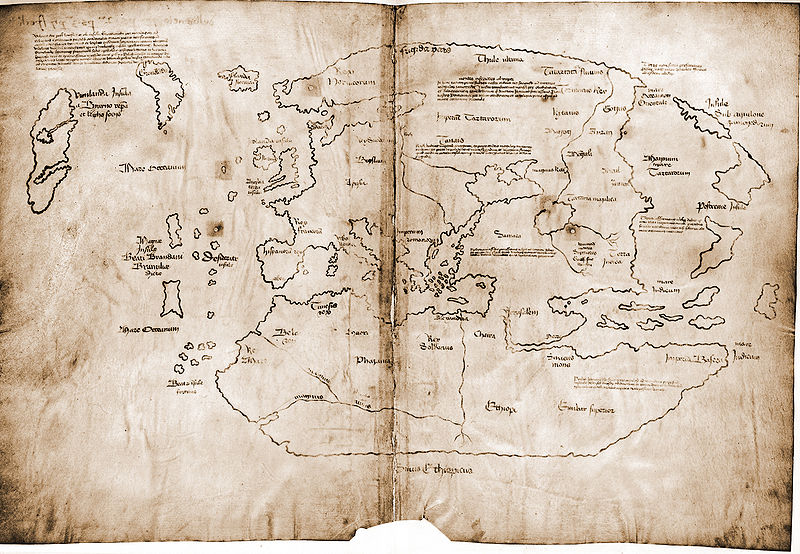 Carbon-14 Dating
HOW DO WE KNOW HOW OLD FOSSILS ARE? In the late 1940s, a scientist
named Willard Libby discovered a way to determine the age of dead
plants and animals remains. All living things are made of carbon.
A very small amount of this carbon is carbon-14, a radioactive
isotope. Once a plant or animal dies, the carbon-14 in its body
begins to disintegrate. Since we know exactly how fast carbon-14
decays, we can determine the approximate age of organic matter by
looking at how much of its carbon-14 has decayed. Before carbon
dating, scientists could only determine the relative age of
fossils. For example, they could look at how fossils collect in
layers of rock. (The deeper the fossil is buried, the older it is.)
But carbon dating is an absolute technique. Since carbon-14 decays
completely after 50,000 years, others radioactive materials with s
lower decay rates are used to date really old remains.
Carbon-14 Dating
HOW DO WE KNOW HOW OLD FOSSILS ARE? In the late 1940s, a scientist
named Willard Libby discovered a way to determine the age of dead
plants and animals remains. All living things are made of carbon.
A very small amount of this carbon is carbon-14, a radioactive
isotope. Once a plant or animal dies, the carbon-14 in its body
begins to disintegrate. Since we know exactly how fast carbon-14
decays, we can determine the approximate age of organic matter by
looking at how much of its carbon-14 has decayed. Before carbon
dating, scientists could only determine the relative age of
fossils. For example, they could look at how fossils collect in
layers of rock. (The deeper the fossil is buried, the older it is.)
But carbon dating is an absolute technique. Since carbon-14 decays
completely after 50,000 years, others radioactive materials with s
lower decay rates are used to date really old remains.
 Cryonic Research
WHAT IF YOU COULD FREEZE YOUR BODY AND DEFROST IT IN THE FUTURE?
Letís say you have an incurable disease. Is it possible for you
to have yourself frozen, with the hope that scientists in the
future can cure you? Yes! The question is, will you survive the
thawing process? As far as most scientists know, freezing the
human body results in massive damage. Ice crystals forming in cells
can cause them to burst, and cracks can form in your body, just
like in an ice cube! Still, there are a bunch of different companies
that offer cryonic freezing services right now. Itíll cost you,
though: anywhere from $30,000 to over $100,000! According to the
scientists at these companies, special chemicals injected after death
will prevent freezing damage. And, they argue, any damage caused
by the freezing will be reparable by future medicine. One thingís
for sure: itíll be a long time, if ever, before this technology is
perfected.
Cryonic Research
WHAT IF YOU COULD FREEZE YOUR BODY AND DEFROST IT IN THE FUTURE?
Letís say you have an incurable disease. Is it possible for you
to have yourself frozen, with the hope that scientists in the
future can cure you? Yes! The question is, will you survive the
thawing process? As far as most scientists know, freezing the
human body results in massive damage. Ice crystals forming in cells
can cause them to burst, and cracks can form in your body, just
like in an ice cube! Still, there are a bunch of different companies
that offer cryonic freezing services right now. Itíll cost you,
though: anywhere from $30,000 to over $100,000! According to the
scientists at these companies, special chemicals injected after death
will prevent freezing damage. And, they argue, any damage caused
by the freezing will be reparable by future medicine. One thingís
for sure: itíll be a long time, if ever, before this technology is
perfected.



 Carbon-14 Dating
HOW DO WE KNOW HOW OLD FOSSILS ARE? In the late 1940s, a scientist
named Willard Libby discovered a way to determine the age of dead
plants and animals remains. All living things are made of carbon.
A very small amount of this carbon is carbon-14, a radioactive
isotope. Once a plant or animal dies, the carbon-14 in its body
begins to disintegrate. Since we know exactly how fast carbon-14
decays, we can determine the approximate age of organic matter by
looking at how much of its carbon-14 has decayed. Before carbon
dating, scientists could only determine the relative age of
fossils. For example, they could look at how fossils collect in
layers of rock. (The deeper the fossil is buried, the older it is.)
But carbon dating is an absolute technique. Since carbon-14 decays
completely after 50,000 years, others radioactive materials with s
lower decay rates are used to date really old remains.
Carbon-14 Dating
HOW DO WE KNOW HOW OLD FOSSILS ARE? In the late 1940s, a scientist
named Willard Libby discovered a way to determine the age of dead
plants and animals remains. All living things are made of carbon.
A very small amount of this carbon is carbon-14, a radioactive
isotope. Once a plant or animal dies, the carbon-14 in its body
begins to disintegrate. Since we know exactly how fast carbon-14
decays, we can determine the approximate age of organic matter by
looking at how much of its carbon-14 has decayed. Before carbon
dating, scientists could only determine the relative age of
fossils. For example, they could look at how fossils collect in
layers of rock. (The deeper the fossil is buried, the older it is.)
But carbon dating is an absolute technique. Since carbon-14 decays
completely after 50,000 years, others radioactive materials with s
lower decay rates are used to date really old remains.
 Cryonic Research
WHAT IF YOU COULD FREEZE YOUR BODY AND DEFROST IT IN THE FUTURE?
Letís say you have an incurable disease. Is it possible for you
to have yourself frozen, with the hope that scientists in the
future can cure you? Yes! The question is, will you survive the
thawing process? As far as most scientists know, freezing the
human body results in massive damage. Ice crystals forming in cells
can cause them to burst, and cracks can form in your body, just
like in an ice cube! Still, there are a bunch of different companies
that offer cryonic freezing services right now. Itíll cost you,
though: anywhere from $30,000 to over $100,000! According to the
scientists at these companies, special chemicals injected after death
will prevent freezing damage. And, they argue, any damage caused
by the freezing will be reparable by future medicine. One thingís
for sure: itíll be a long time, if ever, before this technology is
perfected.
Cryonic Research
WHAT IF YOU COULD FREEZE YOUR BODY AND DEFROST IT IN THE FUTURE?
Letís say you have an incurable disease. Is it possible for you
to have yourself frozen, with the hope that scientists in the
future can cure you? Yes! The question is, will you survive the
thawing process? As far as most scientists know, freezing the
human body results in massive damage. Ice crystals forming in cells
can cause them to burst, and cracks can form in your body, just
like in an ice cube! Still, there are a bunch of different companies
that offer cryonic freezing services right now. Itíll cost you,
though: anywhere from $30,000 to over $100,000! According to the
scientists at these companies, special chemicals injected after death
will prevent freezing damage. And, they argue, any damage caused
by the freezing will be reparable by future medicine. One thingís
for sure: itíll be a long time, if ever, before this technology is
perfected.

